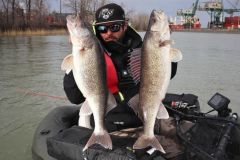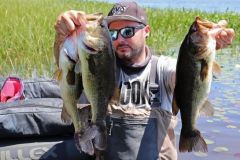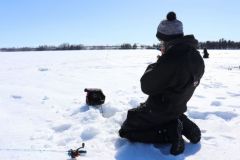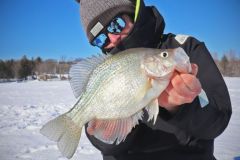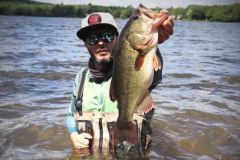The locks
Today's station consists of a dam on one side and a lock on the other. It's a configuration often found with this type of structure, and their prospection is similar from one place to another.
During major floods, the lock side is very interesting to fish, as many fish enter it to take refuge from the current and/or try to swim further up the river.
In my case, the lock is closed at this time of year, so there's no navigation, no water movement and no danger of fishing there. It's the perfect place for float-tubing.
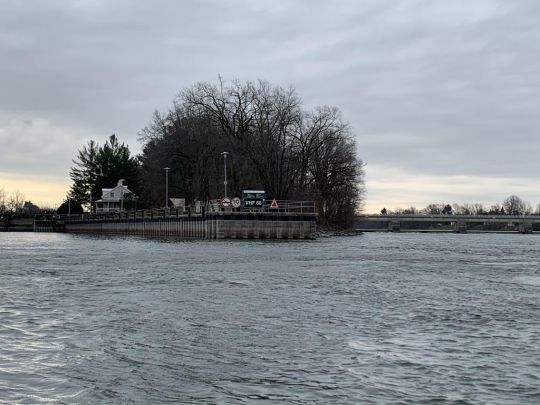
Fishing
The aim of this session is to find walleye in the vertical, but the water level is not high enough for a large number of fish to have entered the lock.
There are a few gatherings of big white fish to spend the winter, but the carnivores and balls of small fish don't seem to be there.
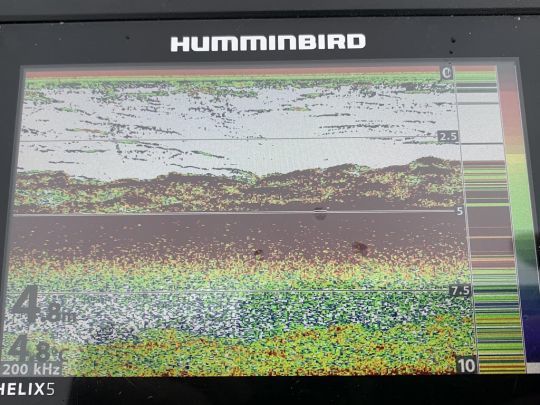
As a result, I concentrate my prospecting on the edge of the main current coming from the dam. Here, the average depth is between 6 and 7 meters and I can spot a few fish in position, lifted off the bottom.
The water is very translucent, so I quickly opted for the natural 4" size. I use a 4" size, because in this river, walleyes don't reach great lengths.
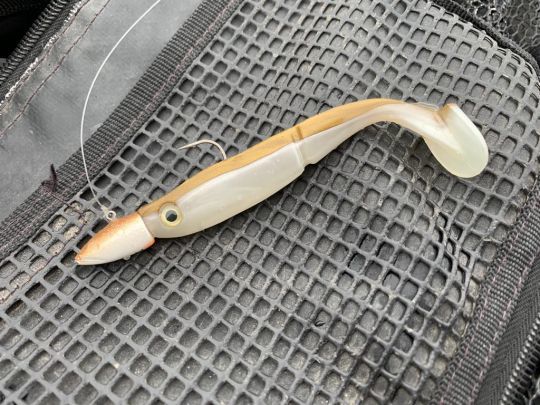
After several slow drifts with no results, I increase the speed of my drifts and animate my lure more energetically. This triggers several fish, which turn out to be striped bass.
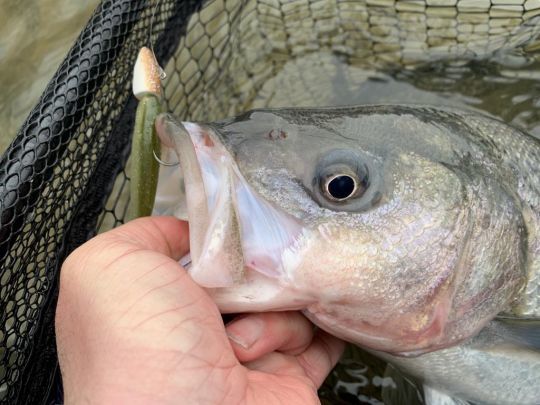
This doesn't bode well for my primary quest, which is walleye, but the pleasure is no less, as the surprise of picking up striped bass on my doorstep is still there!
Indeed, I've noticed that sea bass and walleye don't cohabit, and in areas where walleye are usually found, if the sea bass are there, then the walleye fishing is very bad. This is understandable, as small walleye are part of the striped bass diet.
Striped bass
Surprising as it may seem, freshwater striped bass are present year-round in the St. Lawrence River. This population is distinct from the one found south of the Gulf of St. Lawrence, in the Gaspé Peninsula.
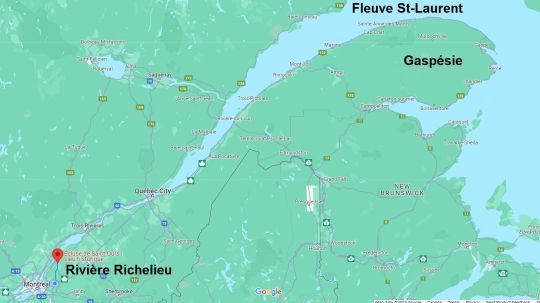
In the river, unlike the southern Gulf population, striped bass is protected under Canada's Species at Risk Act, so its release under proper conditions is mandatory.
The Richelieu River is one of the river's tributaries, and every year striped bass enter it to spend the winter.





